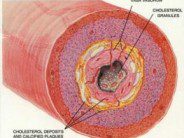 Proteus Syndrome is a very rare congenital disorder that causes overgrowth of skin and bones which results in developmental abnormalities. The disease is named after the Greek god of the sea Proteus, who was believed to be able to change his shape in the water. In a similar fashion, patients afflicted with this malady change shape as they age due to the abnormal overgrowth of skin and bone. The condition is very rare and only about 200 individuals throughout the world have been diagnosed with the disease. Joseph Merrick, also known as the Elephant Man, is thought to have suffered with the disease. Mr. Merrick was an Englishman who lived in the 19th century and gained notoriety for traveling throughout Europe and being exhibited as a medical oddity. In his later life, Mr. Merrick lived at the London Hospital under the medical care of Dr. Frederick Treves. Mr. Merrick would succumb to the disease at the age of 27 due to asphyxiation. A film and play have been produced about the life of Mr. Merrick and both were entitled “The Elephant Man”. Researchers lead by Dr. Marjorie Lindhurst and Dr. Leslie Biesecker have discovered that a somatic activating mutation in the AKT1 oncogene is the etiology of the Proteus syndrome. The AKT1 protein kinase is involved in a cell cycle and growth promoting pathway within the cell which overlaps with PTEN, which has previously been associated with Proteus-like syndromes. Mutations in both AKT1 and PTEN have been shown to cause some forms of cancer. The results of the research were published online in the New England Journal of Medicine. For their study, the researchers performed exome (protein coding regions of the genome) sequencing of DNA samples taken by biopsy from normal tissue and abnormal tissue of six patients with Proteus syndrome. They also performed exome sequencing of DNA samples from several parents and an identical twin of a patient that was not affected by the disease. In the abnormal tissue samples taken from the patients with Proteus syndrome, the researchers found a single nucleotide mutation in the gene for AKT1. This mutation was not found in the normal tissue samples from the patients with Proteus syndrome, their parents, or the unaffected twin sibling. This finding suggests that the mutation occurs as a somatic mutation in the developing embryo and is passed along to that cell lineage only, a condition known as mosaicism. In 1987, Dr. Rudolf Happle first hypothesized that Proteus syndrome may result by a spontaneous mutation that occurs in one cell line early in embryonic development, instead of by an inherited germline mutation. These results confirm that his hypothesis was correct. The researchers also tested tissue samples from 29 other patients diagnosed with Proteus syndrome and found that the AKT1 mutation occurred in 26 of these individuals. Finally, the researchers showed that mutant cell lines derived from affected tissue samples had greater AKT1 phosphorylation, confirming over activation of the protein kinase. The authors wrote, “The Proteus syndrome is caused by a somatic activating mutation in AKT1, proving the hypothesis of somatic mosaicism and implicating activation of the PI3K–AKT pathway in the characteristic clinical findings of overgrowth and tumor susceptibility in this disorder”. The research team will now attempt to sequence DNA from Mr. Joseph Merrick in an attempt to determine if he truly had Proteus syndrome. In addition, future studies will focus on developing drugs that can target the mutant AKT1 protein kinase in an attempt to treat the disorder.
Proteus Syndrome is a very rare congenital disorder that causes overgrowth of skin and bones which results in developmental abnormalities. The disease is named after the Greek god of the sea Proteus, who was believed to be able to change his shape in the water. In a similar fashion, patients afflicted with this malady change shape as they age due to the abnormal overgrowth of skin and bone. The condition is very rare and only about 200 individuals throughout the world have been diagnosed with the disease. Joseph Merrick, also known as the Elephant Man, is thought to have suffered with the disease. Mr. Merrick was an Englishman who lived in the 19th century and gained notoriety for traveling throughout Europe and being exhibited as a medical oddity. In his later life, Mr. Merrick lived at the London Hospital under the medical care of Dr. Frederick Treves. Mr. Merrick would succumb to the disease at the age of 27 due to asphyxiation. A film and play have been produced about the life of Mr. Merrick and both were entitled “The Elephant Man”. Researchers lead by Dr. Marjorie Lindhurst and Dr. Leslie Biesecker have discovered that a somatic activating mutation in the AKT1 oncogene is the etiology of the Proteus syndrome. The AKT1 protein kinase is involved in a cell cycle and growth promoting pathway within the cell which overlaps with PTEN, which has previously been associated with Proteus-like syndromes. Mutations in both AKT1 and PTEN have been shown to cause some forms of cancer. The results of the research were published online in the New England Journal of Medicine. For their study, the researchers performed exome (protein coding regions of the genome) sequencing of DNA samples taken by biopsy from normal tissue and abnormal tissue of six patients with Proteus syndrome. They also performed exome sequencing of DNA samples from several parents and an identical twin of a patient that was not affected by the disease. In the abnormal tissue samples taken from the patients with Proteus syndrome, the researchers found a single nucleotide mutation in the gene for AKT1. This mutation was not found in the normal tissue samples from the patients with Proteus syndrome, their parents, or the unaffected twin sibling. This finding suggests that the mutation occurs as a somatic mutation in the developing embryo and is passed along to that cell lineage only, a condition known as mosaicism. In 1987, Dr. Rudolf Happle first hypothesized that Proteus syndrome may result by a spontaneous mutation that occurs in one cell line early in embryonic development, instead of by an inherited germline mutation. These results confirm that his hypothesis was correct. The researchers also tested tissue samples from 29 other patients diagnosed with Proteus syndrome and found that the AKT1 mutation occurred in 26 of these individuals. Finally, the researchers showed that mutant cell lines derived from affected tissue samples had greater AKT1 phosphorylation, confirming over activation of the protein kinase. The authors wrote, “The Proteus syndrome is caused by a somatic activating mutation in AKT1, proving the hypothesis of somatic mosaicism and implicating activation of the PI3K–AKT pathway in the characteristic clinical findings of overgrowth and tumor susceptibility in this disorder”. The research team will now attempt to sequence DNA from Mr. Joseph Merrick in an attempt to determine if he truly had Proteus syndrome. In addition, future studies will focus on developing drugs that can target the mutant AKT1 protein kinase in an attempt to treat the disorder.
Reference:
Marjorie J. Lindhurst et al. “A Mosaic Activating Mutation in AKT1 Associated with the Proteus Syndrome” NEJM published online July 27, 2011 10.1056/NEJMoa1104017
Image: Royal London Hospital Archives via Wikimedia commons










 DrSamGirgis.com is a blog about medicine, nutrition, health, wellness, and breaking medical news. At DrSamGirgis.com, the goal is to provide a forum for discussion on health and wellness topics and to provide the latest medical research findings and breaking medical news commentary.
DrSamGirgis.com is a blog about medicine, nutrition, health, wellness, and breaking medical news. At DrSamGirgis.com, the goal is to provide a forum for discussion on health and wellness topics and to provide the latest medical research findings and breaking medical news commentary.
{ 0 comments… add one now }